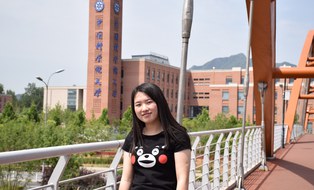Research Field 6
Variability and evolution of antibiotic resistances in the environment

a: cultivation-based detection of transconjugant cells, b/c: sampling of epilithic biofilm in Lockwitzbach River, d: abundance of the mcr-4 resistance gene in a set of wastewater samples.
Antibiotic resistance (AR) is spreading globally and the number of casualties due to infections with multi-resistant bacteria is rising. Antibiotic resistant bacteria are disseminated to the environment in large quantities, e.g. via the application of manure and the discharge of treated municipal wastewater. Antibiotic resistance genes (ARG) and their bacterial hosts (ARB) are considered biological pollutants. Unlike chemicals, they do not only persist in the environment but they undergo proliferation by bacterial growth and horizontal gene transfer.
Research at the Institute of Hydrobiology focuses on the detection and quantification of ARG and ARB in environmental samples by means of both cultivation and culture-independent methods (molecular and genetic analyses). The studied systems include freshwater, groundwater, and wastewater. Observed patterns are analyzed to learn about the potential sources of AR and to understand the mechanisms behind the observed distribution and dynamics of ARB/G. In addition to monitoring-oriented research, lab-experiments are performed to study specific processes involved in the proliferation and persistence of AR, namely the plasmid-mediated horizontal transfer of ARG.
Methods
- Sampling of bacterial communities from different environments (surface water, groundwater, wastewater, sediments)
- Identification of antibiotic resistant isolates according to EUCAST standards (disc diffusion test)
- Characterization of resistant, susceptible, and intermediate sub-populations by statistical methods
- Isolation of DNA from cultures and environmental samples
- Standard and real-time PCR for gene identification and quantification
- Studies of plasmid-mediated horizontal gene transfer using mating experiments and mathematical modeling
- Analysis of metagenome data with regard to taxonomy and antibiotic resistance genes
Selected projects
| 2021 - 2024 | ACRAS-R: Characterisation of AMR transmission from clinic (hospital wastewater) to the environment (sea and animals) on Guadeloupe. |
| 2021 - 2024 | PRESAGE: Potential of decentralized wastewater treatment for preventing the spread of antibiotic resistance, organic micropollutants, pathogens and viruses |
| 2021 - 2024 | Urban Resistom: Detecting and quantifying the contribution of a city’s sewer system on the spread, dynamics and seasonality of antibiotics and antibiotic resistance genes within an urbanized water body. |
| 2020 - 2023 | ANTIVERSA: Biodiversity as an ecological barrier for the spread of clinically relevant antibiotic resistance in the environment |
| 2020 - 2022 | EMBARK: Establishing a Monitoring Baseline for Antimicrobial Resistance in Key environmments |
| 2019 - 2022 | DSWAP: Decision support-based approach for sustainable water reuse application in agricultural production |
| 2016 - 2019 | Hyreka: Biological and hygienic - medical relevance and control of antibiotic-resistant pathogens in clinical, agricultural and municipal waste water and their relevance in raw water |
| 2015 - 2019 | ANSWER: ANtibioticS and mobile resistance elements in WastEwater Reuse applications: risks and innovative solutions |
| 2014 - 2017 | StARE: Stopping Antibiotic Resistance Evolution |
Staff / Contact
 © MCB
© MCB
Member of Scientific Staff
NameDr. Magali De La Cruz Barron
Send encrypted email via the SecureMail portal (for TUD external users only).
Postal address:
TUD Dresden University of Technology
Department Hydrosciences
Institute of Hydrobiology
01062 Dresden
Parcel address:
TUD Dresden University of Technology Institute of Hydrobiology Sekretariat, 1.OG Raum 60/61 Zellescher Weg 40
01217 Dresden
 © David Kneis
© David Kneis
Geo-ecologist
NameDr. David Kneis
Send encrypted email via the SecureMail portal (for TUD external users only).
Postal address:
TUD Dresden University of Technology
Department Hydrosciences
Institute of Hydrobiology
01062 Dresden
Parcel address:
TUD Dresden University of Technology Institute of Hydrobiology Sekretariat, 1.OG Raum 60/61 Zellescher Weg 40
01217 Dresden
Wiss. Mitarbeiter
NameMr Dr. Uli Klümper
Send encrypted email via the SecureMail portal (for TUD external users only).
Visiting address:
Drude-Bau, 1. OG, Raum 56 Zellescher Weg 40
01217 Dresden
Postal address:
TUD Dresden University of Technology
Department Hydrosciences
Institute of Hydrobiology
01062 Dresden
Parcel address:
TUD Dresden University of Technology Institute of Hydrobiology Sekretariat, 1.OG Raum 60/61 Zellescher Weg 40
01217 Dresden
 © Alan Elena
© Alan Elena
Scientific staff
NameDr. Alan Elena
Antimicrobial resistance, Epidemiology, Bioinformatics
Send encrypted email via the SecureMail portal (for TUD external users only).
Visiting address:
Drude-Bau, 1st floor, Room 57 Zellescher Weg 40
01217 Dresden
Postal address:
TUD Dresden University of Technology
Department Hydrosciences
Institute of Hydrobiology
01062 Dresden
Parcel address:
TUD Dresden University of Technology Institute of Hydrobiology Sekretariat, 1.OG Raum 60/61 Zellescher Weg 40
01217 Dresden
 © Peiju Fang
© Peiju Fang
PhD student
NameM.Sc. Peiju Fang
Antibiotic resistance
Send encrypted email via the SecureMail portal (for TUD external users only).
 © K. Bagra
© K. Bagra
PhD Student
NameM.Sc. Kenyum Bagra
AMR in rivers in India, acquisition or spread AMR
Send encrypted email via the SecureMail portal (for TUD external users only).
Postal address:
TUD Dresden University of Technology
Department Hydrosciences
Institute of Hydrobiology
01062 Dresden
Parcel address:
TUD Dresden University of Technology Institute of Hydrobiology Sekretariat, 1.OG Raum 60/61 Zellescher Weg 40
01217 Dresden
PhD Student
NameM.Sc. Faina Tskhay
Send encrypted email via the SecureMail portal (for TUD external users only).
Visiting address:
Drude-Bau, Ground floor, Room 51 Zellescher Weg 40
01217 Dresden
Postal address:
TUD Dresden University of Technology
Department Hydrosciences
Institute of Hydrobiology
01062 Dresden
Parcel address:
TUD Dresden University of Technology Institute of Hydrobiology Sekretariat, 1.OG Raum 60/61 Zellescher Weg 40
01217 Dresden
PhD Student
NameM.Sc. Eda Deniz Erdem
Send encrypted email via the SecureMail portal (for TUD external users only).
Visiting address:
Drude-Bau, Ground floor, Room 51 Zellescher Weg 40
01217 Dresden
Postal address:
TUD Dresden University of Technology
Department Hydrosciences
Institute of Hydrobiology
01062 Dresden
Parcel address:
TUD Dresden University of Technology Institute of Hydrobiology Sekretariat, 1.OG Raum 60/61 Zellescher Weg 40
01217 Dresden
PhD Student
NameM.Sc. Diala Konyali
Send encrypted email via the SecureMail portal (for TUD external users only).
Visiting address:
Drude-Bau, Ground floor, Room 51 Zellescher Weg 40
01217 Dresden
Postal address:
TUD Dresden University of Technology
Department Hydrosciences
Institute of Hydrobiology
01062 Dresden
Parcel address:
TUD Dresden University of Technology Institute of Hydrobiology Sekretariat, 1.OG Raum 60/61 Zellescher Weg 40
01217 Dresden
